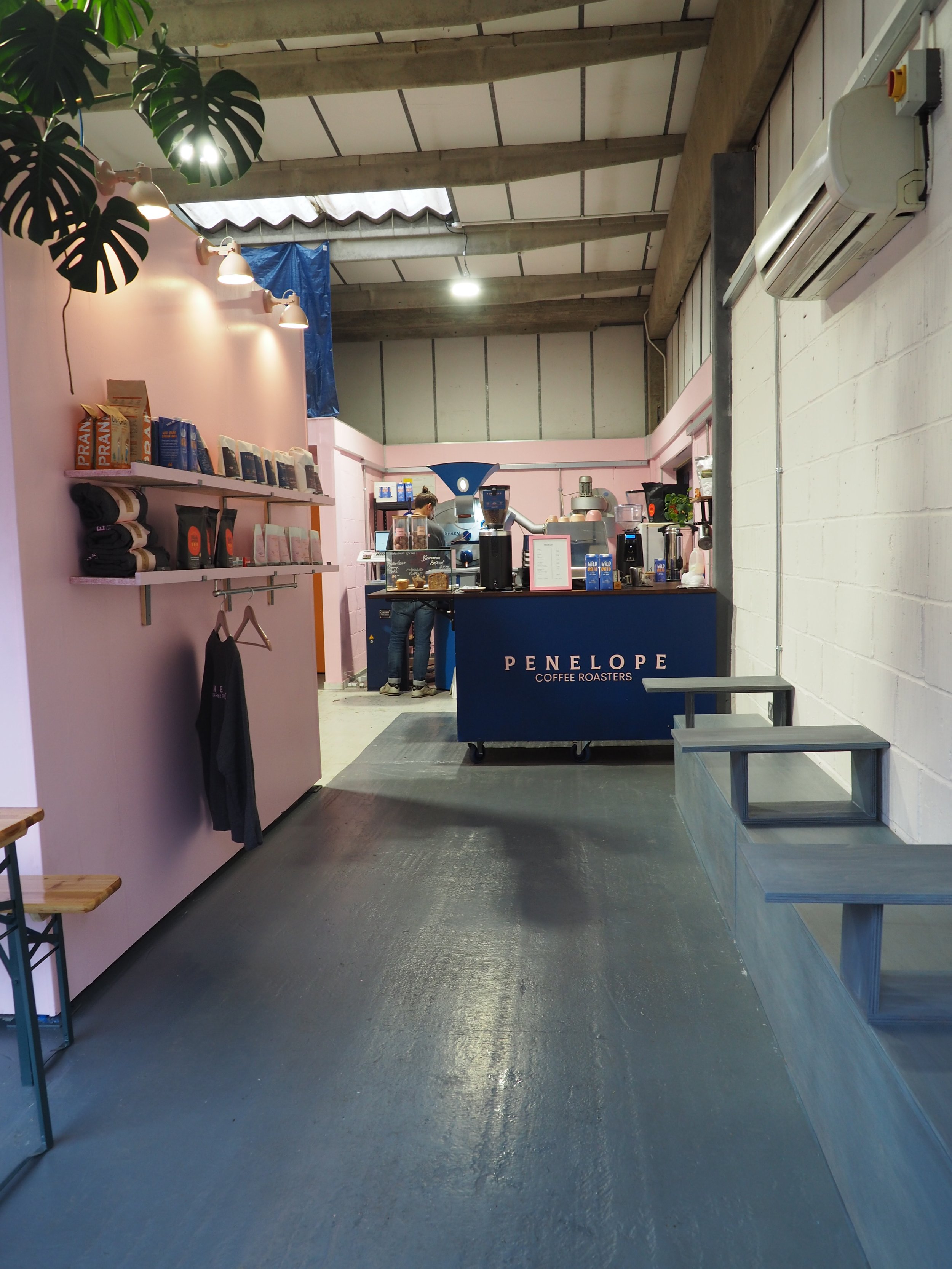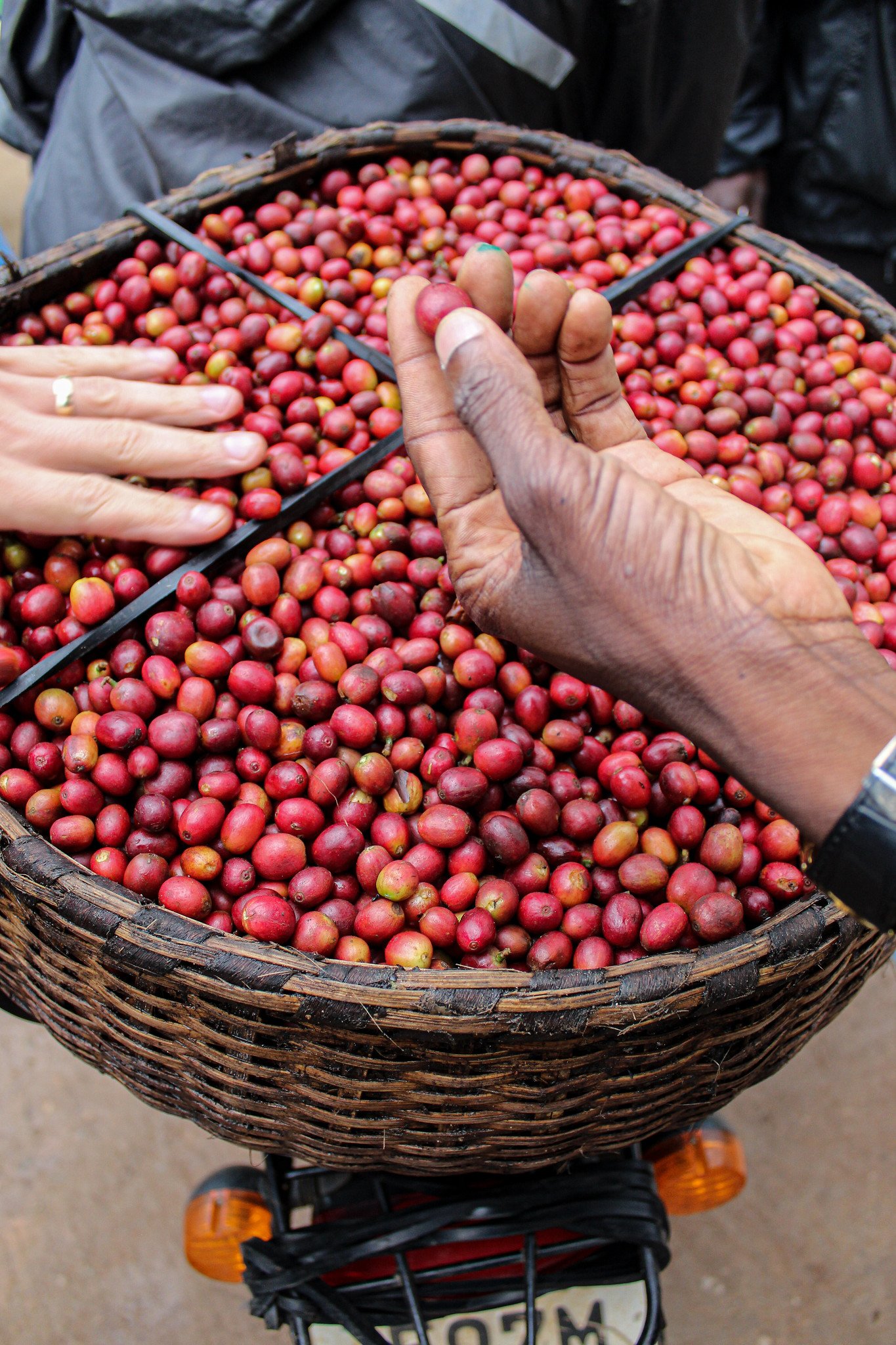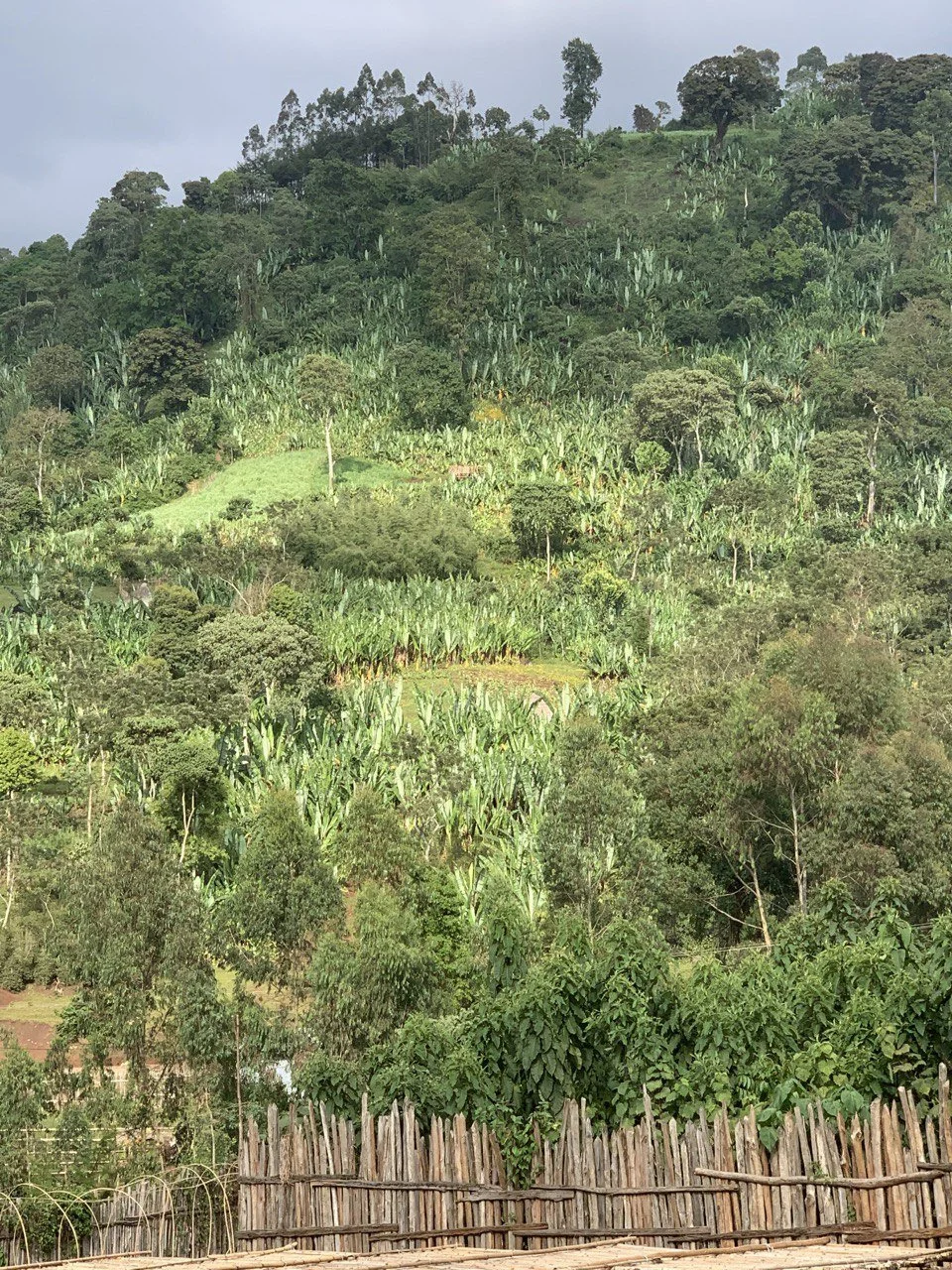


ETHIOPIA | WINE PROCESS - EXTENDED FERMENTATION
This grade 1 microlot is from Guji Kercha station in Banko Michicha, Kercha district, Guji zone. The station works with 150 local smallholder farmers who cultivate the local landrace varieties of Kurume, Wolisho and Dega at altitudes ranging between 1,900 and 2,030masl.
This lot was processed with extended cherry fermentation in vacuum sealed stainless steel tanks with a fermentation valve to vent off CO2.
This wine process is so-called because the techniques involved have been borrowed from the wine industry, though similar techniques can be found in many products derived from controlled fermentation. In summary, coffee cherries are fermented in sealed, oxygen deprived, stainless steel tanks with careful monitoring of temperature.
Firstly, cherries are sorted to select only the ripest for processing. The cherries are then placed in a stainless steel tank (pictured) with a specialised fermentation valve part filled with water. As the fermentation process begins, CO2 is released and builds up in the tank. Once the internal pressure of the tank exceeds the atmospheric pressure, the CO2 will push through the water in the valve as individual bubbles. The valve prevents any air entering the tank from the outside, allowing for extended fermentation whilst reducing the risk of spoilage and negative fermented flavours.
Fermentation time is dictated by the temperature readings inside the tank, but typically the process lasts for 4-5 days, after which the cherries are dried in the traditional way: on raised African beds for 15 - 18 days. Once the cherries have sufficiently dried they are rested before being transported to a central dry mill in Addis Ababa for secondary processing (hulling, grading, sorting and handpicking)Djibouti.
This grade 1 microlot is from Guji Kercha station in Banko Michicha, Kercha district, Guji zone. The station works with 150 local smallholder farmers who cultivate the local landrace varieties of Kurume, Wolisho and Dega at altitudes ranging between 1,900 and 2,030masl.
This lot was processed with extended cherry fermentation in vacuum sealed stainless steel tanks with a fermentation valve to vent off CO2.
This wine process is so-called because the techniques involved have been borrowed from the wine industry, though similar techniques can be found in many products derived from controlled fermentation. In summary, coffee cherries are fermented in sealed, oxygen deprived, stainless steel tanks with careful monitoring of temperature.
Firstly, cherries are sorted to select only the ripest for processing. The cherries are then placed in a stainless steel tank (pictured) with a specialised fermentation valve part filled with water. As the fermentation process begins, CO2 is released and builds up in the tank. Once the internal pressure of the tank exceeds the atmospheric pressure, the CO2 will push through the water in the valve as individual bubbles. The valve prevents any air entering the tank from the outside, allowing for extended fermentation whilst reducing the risk of spoilage and negative fermented flavours.
Fermentation time is dictated by the temperature readings inside the tank, but typically the process lasts for 4-5 days, after which the cherries are dried in the traditional way: on raised African beds for 15 - 18 days. Once the cherries have sufficiently dried they are rested before being transported to a central dry mill in Addis Ababa for secondary processing (hulling, grading, sorting and handpicking)Djibouti.


























